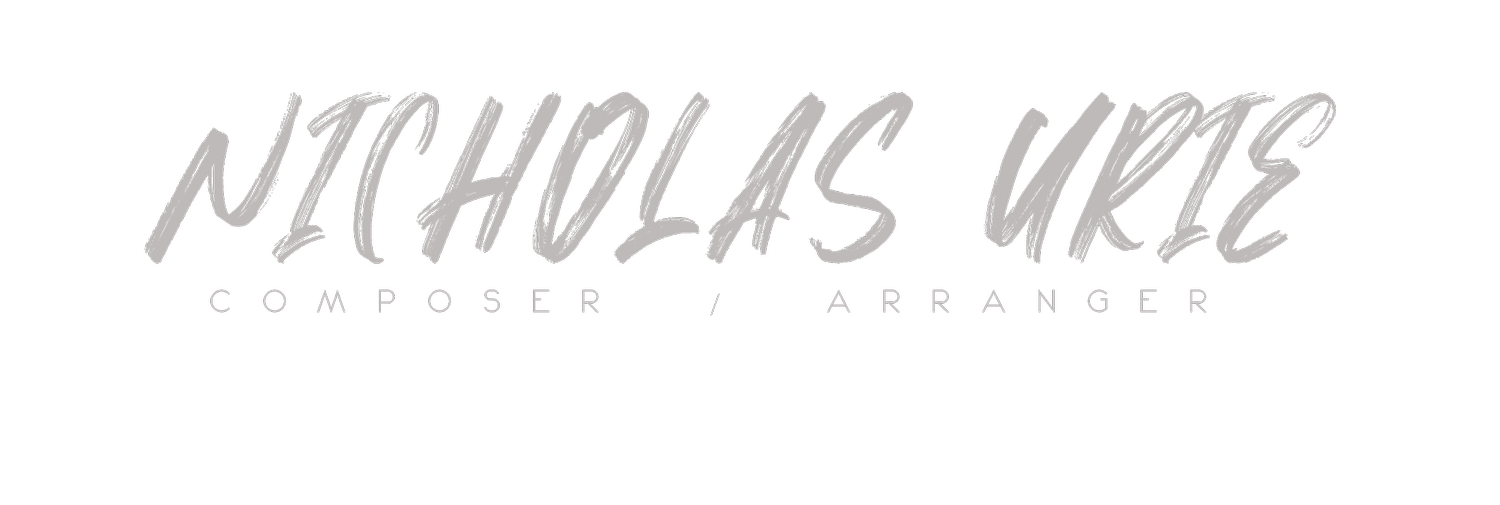Something From Nothing
Something From Nothing Foreword: Warren Schwartz The Shape of Music
The conventional romanticized idea of creativity holds that a muse bestows fully-formed works of art on some lucky humans. This narrative insists that inspiration is spontaneous, given to artists by an external supernatural force. It suggests that creativity and inspiration are wholly different from other human endeavors where hard work is the required path to success. But follow any artist for a day and you will find them toiling at their trade, engaging it over and over with curiosity and resilience. When asked about creative inspiration Picasso said, “Inspiration exists, but it has to find you working.”
The principal creative hurdle I encounter as a composer is making something where nothing yet exists, giving body to an idea. The music that lives in my mind’s ear is ephemeral and difficult to coax out of the shadows. Though it is ever-present otherwise, it is conspicuously absent when I go searching for it. Because of this paradox and because music is my life’s work, it is essential that I employ a practice that allows me to access my internal musical world on demand. The rituals of my creative practice trigger a state of mind that is conducive to spontaneous creation.
While the details of my ritual have changed considerably over the years, sketching is consistently the central avenue of access to my mind's ear. It offers a hunter’s blind as I try to listen without disturbing anything, a quiet way of inviting my imagination to stay and play instead of running away. I start by quickly jotting down small musical moments without subjecting them to the realities and restraints of time. Rhythms are approximate or absent, and bar lines are the enemy. I scrawl these skeletal gestures onto large sheets of blank manuscript paper, putting ideas down with space around them so I can add whenever and wherever needed, so I can move freely from one idea to the next, filling the page at random. I am not concerned with how this stream-of-consciousness will fit together. Rather than looking like music, my notation resembles medieval neumes or some other kind of ancient and cryptic glyph, in other words, sketches.
When I am sketching, I attempt to work without observing myself. My imagination flees at the first hint of criticism so I try to allow these small germs to exist outside of judgment. I want the ideas to exist apart from me, to breathe and grow, to be the catalyst for more ideas. Utility is not the point of the practice; I don’t expect any single idea to be useful to me. Sketching is play and play does not want to be managed or interrupted or even observed.
At some point, the sketches begin to distill themselves into groups of melodies and harmonies that somehow work together. This is not a conscious decision; it is my mind uncovering a musical space that it wants to explore, and when this happens I begin to evaluate the material critically for the first time. I discard most of what I’ve written. I arrange and rearrange what is left of the small, amorphous gestures roughly into a possible chronological order, considering how I might develop and expand the gestures to fill the form that I imagine for the piece.
And now a different kind of writing begins, one that is newly fed and enhanced by critical assessment. You would recognize the notation as music and you would probably call the work composing. As I start to subject the sketch ideas to the confines of time, assigning specific rhythms, bar lines, tempo, and groove, this developed material reveals an outline that the listener can follow: the form. This is also when my original plans for the form of the piece meet with the realities of the sketch material, but once I understand what the piece is, what these ideas can come together to be, I can expand it into its final full score configuration. The piece now welcomes editing, refining, ornamenting, developing a sound world. A critical eye and deft technique, so destructive during the sketching process, bring this music to life adding colors, textures, and shapes.
For me, composing is the process of turning sketches into music. It is the process of moving from playful possibilities to a thoughtful and cohesive structure. Chuck Close said “Inspiration is highly overrated. If you sit around and wait for the clouds to part, it's not liable to ever happen. More often than not, work is salvation.” Sketching invites my muse to visit. It is the opening salvo of my process, a beacon that lets inspiration find me prepared to receive it. Sketching gives corporality to the incorporeal, bridging the space between nothing and something.

